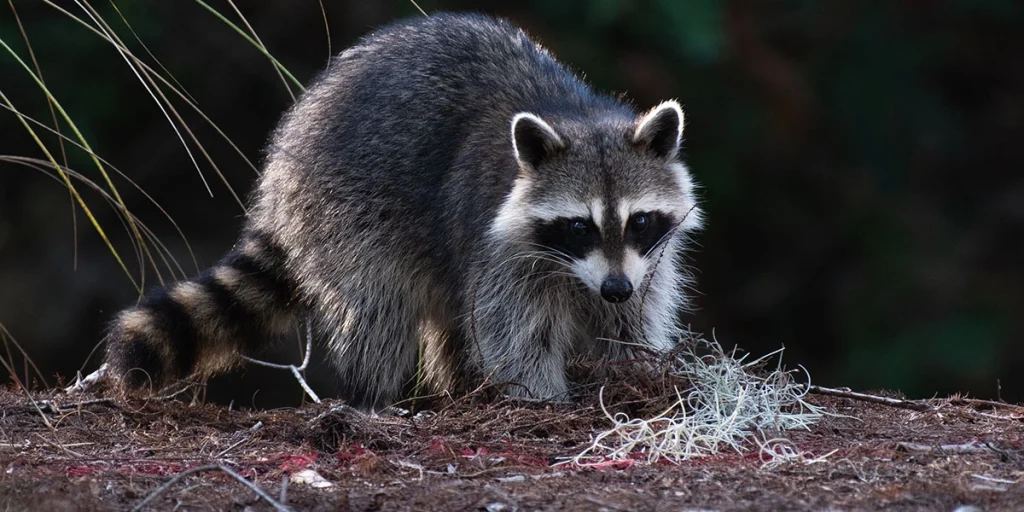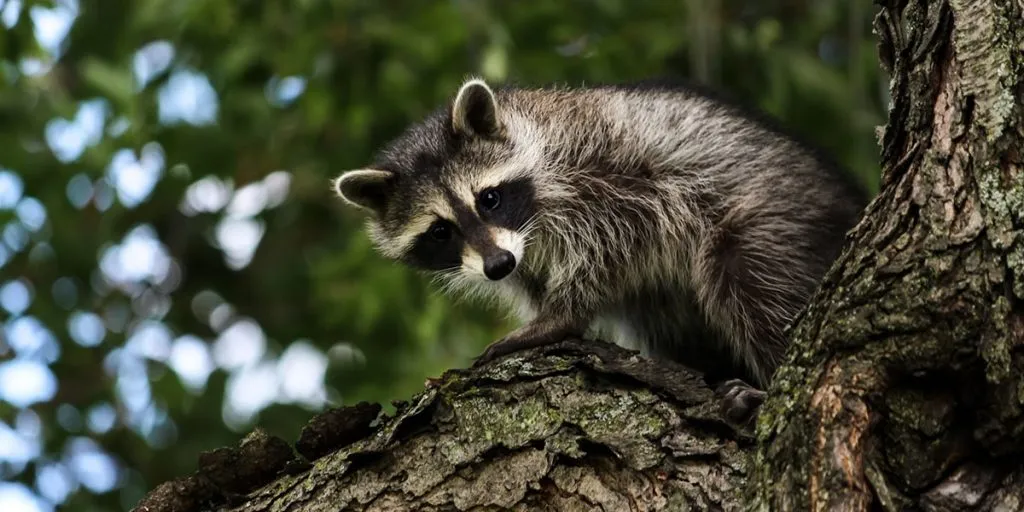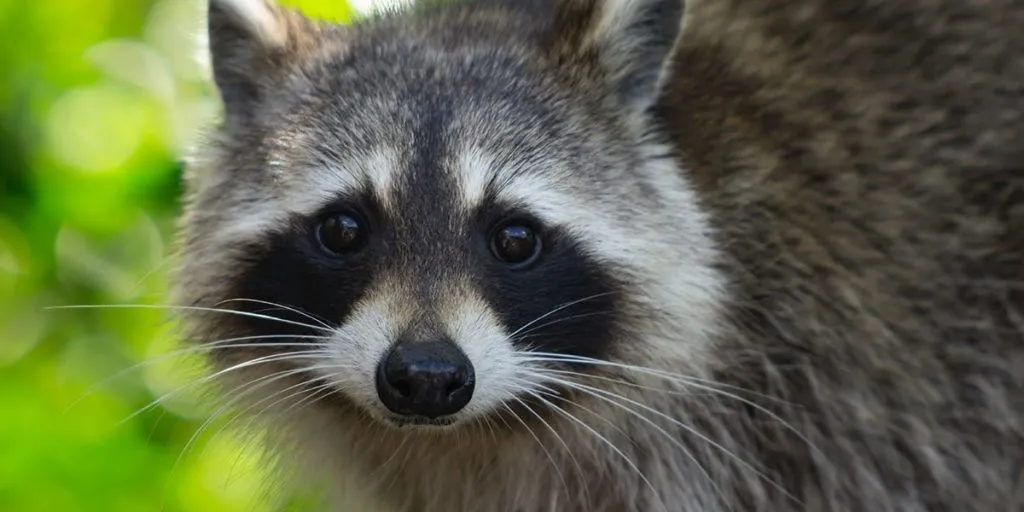The wild raccoon is an intelligent, opportunistic feeder. The furry animals will eat almost anything, and they will not shy away from hunting for small prey. The carnivorous side of their diet is highly varied, and will depend on what’s available in their habitat.
Raccoons will primarily eat meat in the form of small reptiles, fish, snails, crayfish, or frogs. While meat is an essential source of food for raccoons, they are generally considered omnivores. Over half of the raccoon’s diet will consist of meat, or a similar type of animal protein.
About one-third of their diet includes berries, vegetables, nuts, grains, and even tree bark. In an urban environment, a lot of this food is replaced by what humans leave behind. That’s also where the term ‘trash panda’ comes from!
Raccoons Are Omnivorous Animals
An omnivorous animal will eat both meat and plants. Omnivores have the ability to eat and survive on both plant and animal matter. The metabolism of an omnivore has adapted to digesting meat as well as vegetables, fruits, nuts, and many other sources of nutrients.
Raccoons are mostly dependent on meat in their diet (about 2/3), but this does not mean they are considered carnivores. The fact that a raccoon is able to digest nutrients from non-meat sources and relies on them makes it clear that the species is an omnivore.
As a rule of thumb, carnivores are unable to digest plant-based food sources properly. The entire diet of a carnivore would depend on eating other animals. The raccoon requires a broader variety of nutrients. The animals have adapted to eat all types of food sources, including plant-based ones.
Invertebrates Over Vertebrates
You’ll never see a raccoon hunt down an animal larger than its own body size. Even rodents, which a raccoon will sometimes eat, are not high on the list of prey. Instead, raccoons prefer to hunt invertebrate animals like crayfish, snails, and crabs.
This doesn’t mean meat from vertebrates is not on the menu at all. Fish and frogs are commonly eaten by wild raccoons, and so are small birds and eggs. Nevertheless, the trash panda prefers the ‘easy prey’ that can be found near the waterside. This is their natural hunting ground where the majority of their food comes from.
Learn more about the difference between vertebrate and invertebrate animals here.
Raccoons Hunt Near Water
Lakes, rivers, marshes are the preferred locations for a raccoon to hunt and forage for meat. They will usually hunt alone, or in small tight-knit groups. Usually, these groups consist of multiple male siblings, or a mother and her (almost grown-up) litter of young.
In most cases, you will be able to find a raccoon living within a 10-mile radius near a body of water, where they will go at night to hunt for prey. The ideal habitat also has a lot of trees, which are used as dens or places to hide from predators.
Wet locations are where invertebrates are found as easy prey. These locations are what the trash panda has adapted its hunting strategy toward over the years. They learn to hunt when they are only a few weeks old, and their mom is usually their invaluable teacher.
Baby Raccoons Also Eat Meat
Newborn kits will exclusively drink milk from their mother, but baby raccoons will slowly start eating solid foods from 8 to 9 weeks of age. This is when they will start leaving the nest with their mom in search of food. Mom will teach her litter how to climb, hunt, and kill small prey for meat.
As soon as adolescent kits start to understand which animals are easy to kill and feed on, they will start eating them. The meat from this early prey is usually invaluable for their late-stage growth. This is needed for the long winter months, which raccoons tend to spend in a semi-winter sleep.
You can imagine that raccoon teeth are still developing when kits are growing. The irritation this provides motivates the animals to chew on the hard shells of crayfish, crabs, and other invertebrates. It’s a great way for them to start learning how to hunt and start eating more nutrient-rich meat.
Never Feed A Raccoon Meat
While it might be tempting to feed a raccoon some meat yourself, this should be avoided at all costs. Raccoons are wild animals that are perfectly capable of feeding themselves. If you offer them a piece of sausage or a steak, they will start associating humans with getting food.
Feeding is the number one reason raccoons are aggressive and dangerous towards humans.
If you feed a raccoon some meat bought in the store, it might be cute at first. However, after a while, the animals will expect you to keep feeding them. This will quickly turn ugly: the animals will quickly become dependent on your feeding pattern and might even bite you in the process. This isn’t just dangerous, it is also unhealthy for the raccoon. It will needlessly put you and the animals in danger, so never feed them anything!



